
Dearborn, Michigan, was at the heart of auto industry innovation during the days of the Model T Ford.
Now clean energy and environmental justice advocates are proposing that the city play a lead role in greening the auto industry, through a transformation of the Dearborn Works steel mill to “green steel” — a steelmaking process powered by hydrogen and renewable energy with drastically lower emissions than a traditional blast furnace.
The blast furnace at Dearborn Works is due for relining in 2027, at an estimated cost of $470 million. Advocates argue that instead of prolonging the blast furnace’s life, its owner, Cleveland Cliffs, should invest another $2 billion dollars and convert the mill to Direct Reduced Iron (DRI) technology powered by green hydrogen (hydrogen produced with renewable energy).
An October report by Dr. Elizabeth Boatman of the firm 5 Lakes Energy examines the economics and logistics of such a conversion, and argues that demand for cleaner steel is likely to grow as auto companies and other global industries seek to lower their greenhouse gas footprints. Starting in 2026, steel importers to the European Union will need to make payments to offset emissions associated with steel production.
Worldwide, the auto industry is the second largest consumer of steel after construction, and “being able to pass on the price of a ‘green steel premium’ to its end consumers, the automotive industry is uniquely positioned to create demand for green steel without having to rely on public subsidies,” the European Union think tank CEPS said in a recent publication.
“This is a great chance for the state to step in now and ensure this conversion happens, instead of waiting another 20 years,” said Boatman. “All the economic indicators suggest clean steel is the steel product of the future, and the best way to future-proof jobs especially in the steel sector and especially for unions.”
Cleveland Cliffs is planning to convert its Middletown, Ohio, steel mill to DRI, tapping a $500 million federal grant for industrial decarbonization under the Bipartisan Infrastructure Law and Inflation Reduction Act.
A DRI furnace does not need to use coke or heat iron ore to 3,000 degrees Fahrenheit to produce pure “pig iron”; the same result is achieved with a different chemical process at much lower temperatures. DRI furnaces can be powered by natural gas or clean hydrogen. Initially, Cleveland Cliffs says, its Middletown mill will run on natural gas, releasing about half the carbon emissions of its current blast furnace. Eventually, the company announced, it could switch to hydrogen.
Along with slashing greenhouse gas emissions, a similar green steel conversion at Dearborn Works would greatly reduce the local air pollution burden facing local residents in the heavily industrial area, which is also home to a Marathon oil refinery, a major rail yard and other polluters.
But it wouldn’t be cheap. Boatman’s report estimated the cost of converting a blast furnace to a DRI furnace and associated electric arc furnaces at $1.57 billion, plus $2.6 billion to build a green hydrogen plant. Utility DTE Energy would need to work with grid operator MISO to add about 2 GW of solar and 2 GW of wind power, plus battery storage, to the grid to power the green hydrogen production.
The conversion would mean closure of the EES Coke plant, which turns coal into coke for the steel mill, on heavily polluted Zug Island in the River Rouge just outside Detroit, five miles from Dearborn. In 2022, the EPA sued the coke plant, a subsidiary of DTE Energy, over Clean Air Act violations.
A recent study by the nonprofit Industrious Labs found that the EES Coke plant could be responsible for up to 57 premature deaths and more than 15,000 asthma attacks. The report also found that more than half the people living within a three-mile radius of both the steel mill and coke plant are low-income, and three-quarters of those living around the coke plant are people of color, as are half those living around the steel mill.
“The total health costs are quite significant,” said Nick Leonard, executive director of the Great Lakes Environmental Law Center, which is representing local residents as intervenors in the EPA lawsuit against the coke plant. “We allow companies to externalize those costs and not account for them. If they were required by some sort of change in policy or regulation to be responsible for those costs, it would certainly make the case they could make this expensive switch” to green steel.
The law center also represented residents in legal proceedings around Dearborn Works’ Clean Air Act violations, including a 2015 consent decree and a 2023 mandate to install a new electrostatic precipitator at a cost of $100 million.
Leonard said local residents “know Cleveland Cliffs poses a risk to their health, and they want solutions. They know there’s a problem, they are frustrated by the lack of will or attention from state and local government.”
Cleveland Cliffs did not respond to a request for comment.
The country’s active steel mills are concentrated in Pennsylvania, Indiana, Ohio and Michigan. Advocates and residents are asking Nippon Steel to consider a green steel conversion at the Gary Works mill in Northwest Indiana, if the global corporation succeeds in acquiring Gary Works owner U.S. Steel. Advocates have also proposed green steel conversions for Pennsylvania mills.
There are factors that make a green steel conversion both more promising and more challenging at Dearborn Works, compared to other locations, Boatman explained.
Dearborn Works has only one blast furnace in operation, meaning a potentially smaller investment than at mills with more furnaces. Michigan has also set aggressive renewable energy goals, which could be furthered by the ambitious renewable energy buildout that would be required to produce enough green hydrogen for the steel mill.
“That’s why we’re asking the state of Michigan and the governor to get all the interested parties to the table to actually talk about this, hopefully commit to it, and do the detailed planning that needs to be done to figure out how much wind, how much solar, how much battery storage does there need to be to get this off the ground,” said Boatman.
Michigan has legal limits on behind-the-meter generation that could make it more difficult to build renewables specifically to power green hydrogen production for a steel mill. Utilities would instead need to produce or procure the renewable energy, and sell it to the steel mill, Boatman explained.
A green steel conversion at Dearborn Works could create a total of about 500 new jobs, Boatman estimates, considering that about 500 jobs would be lost at the closing coke plant but 410 jobs would be created at the hydrogen plant, 550 in new renewables and 170 at the mill itself. The DRI conversion at the Middletown steel mill is expected to create 170 new permanent jobs and 1,200 construction jobs, according to Cleveland Cliffs.
A 2023 analysis by the Ohio River Valley Institute found that at the Mon Valley Works steel mill in Pennsylvania, a DRI conversion would likely preserve more iron- and steel-making jobs than “business as usual,” with 87% of the current jobs expected to exist in 2031, compared to 69% without a change — as U.S. steel production continues to shrink and automate.
“We are seeing a general trend for both iron and [secondary] steel production to move toward the South, to states that aren’t friendly to unions and can produce products at cheaper prices by bypassing unions,” said Boatman. “Michigan obviously has a proud history of being a strong union state, it matters to keep those good union jobs there.”
Labor unions have largely been silent on the concept of green steel conversion. The United Auto Workers union — which represents Dearborn Works employees — and the United Steelworkers did not respond to requests for comment.
The U.S. Department of Energy plans to spend $8 billion on hydrogen hubs, and a potentially lucrative tax credit known as 45V is being finalized for clean hydrogen. Experts and advocates agree that energy-intensive, hard-to-decarbonize industries like steel are where hydrogen could have the most impact. But large-scale production of pure hydrogen for industrial use is still in nascent stages, and little infrastructure has been built or tested for transporting and storing hydrogen.
That is among the reasons, Boatman said, that there’s been reluctance among residents and union leaders to embrace the concept of green steel. Boatman’s report emphasizes that community benefits agreements and community engagement processes are crucial to make sure residents are informed about, benefit from, and have a meaningful voice in any green steel plans.
“Union workers and fence-line community members all want better air quality, lower emissions, who wouldn’t want to go to work knowing you’re safer being there?” she said. “There’s a lot of interest in cleaning up the air. It’s more a question over how that happens. When hydrogen becomes part of the equation, there’s always some concern.”
She noted that hydrogen could potentially be stored in salt caverns in the Detroit area, though extensive study on the feasibility and environmental impacts would be needed. In Mississippi, a startup company Hy Stor Energy is planning to store green hydrogen in salt caverns, ready to generate electricity during times of high demand.
Tax incentives for clean hydrogen could provide major incentives for steel mills. But clean hydrogen proposed projects have been in flux nationwide as the rules for qualifying for 45V tax credits are being hashed out in a lengthy, controversial process; and the change in presidential administration adds even more uncertainty.
“These industries have to be incentivized,” said Roxana Bekemohammadi, founder and executive director of the U.S. Hydrogen Alliance, which advocates for pro-hydrogen policies on the state level. “Europe is creating a mandate — that’s one incentive. We’d love to support any incentives that would allow hydrogen to be leveraged in the steel industry. With state legislation we certainly can incentivize it. It’s a question of how competitive we want to be.”

This article was originally published by the Idaho Capital Sun.
The Boise Airport became powered by 100% renewable energy this fall after Boise opted to be the first city to sign on to an optional new renewable energy program through Idaho Power.
The city of Boise is purchasing enough solar energy to power both the Boise Airport and the Lander Street wastewater treatment facility through 100% renewable energy, Steve Hubble, climate action manager for the city of Boise, said in an interview Thursday.
The Boise Airport is likely the first municipally-owned major airport in Idaho to become 100% solar energy powered. Hubble said he isn’t familiar enough with municipalities in North Idaho or eastern Idaho, which work with different utility companies, to know what their energy mix is.
“We’re the first municipality in Idaho to enter one of these Clean Energy Your Way contracts, so that’s pretty exciting in and of itself,” Hubble said. “And then from a quantitative perspective, I’m always going to link that back to what the city’s goals are.”
The move to powering its facilities by renewable energy represents Boise moving forward on climate policies at a time when the Idaho Legislature is actively pushing back against environmental and climate programs. While the Idaho Legislature has not established formal climate goals, the city of Boise has specific goals it bases climate policies around.
Making the Boise Airport and Lander Street wastewater treatment plant 100% renewable-powered brings the city to 25% of its 2030 renewable energy goal for city government.
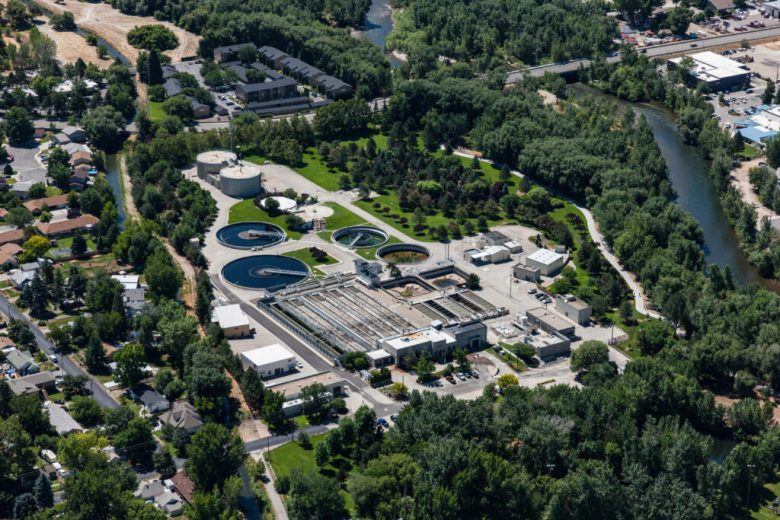
“So in other words, if you look at all the city’s electricity usage right now, about a quarter of it is being powered by renewable electricity, because the airport and Lander Street are two of our three biggest electricity-using facilities,” Hubble said.
Boise had been powering the airport and Lander Street facility with the standard energy it received from Idaho Power, which includes an energy portfolio of renewable energy like hydro as well as nonrenewable energy sources, like coal. To go 100% renewable, the city bought enough renewable solar energy to cover 100% of the energy those two facilities use.
The project is part of Idaho Power’s Clean Energy Your Way program, which is optional and does not change the energy mix that regular Idaho Power customers receive or the rates they pay, Idaho Power Director of Economic Development and Innovation Megan Ronk said in an interview.
Idaho Power’s largest source of energy today is renewable hydro power, Ronk said. For 2022, 24% of Idaho Powers energy generation capacity was coal, Idaho Power reported. Idaho Power has a goal to have 100% clean energy by 2045.
For customers who want to go renewable sooner, Idaho Power created Clean Energy Your Way, Ronk said.
“Clean Energy Your Way is really intended to provide a menu of options to meet customers where they are at in meeting their respective renewable and clean energy goals,” Ronk said in a phone interview.
The Boise City Council approved participating in the Clean Energy Your Way program in October 2023.
“This is possible because Boiseans have been so clear that they expect our city to lead in protecting our environment for the future,” Boise Mayor Lauren McLean said in a written statement after the Boise City Council vote. “It is important that we are resilient and because we want our kids, and their kids, to be healthy and to have a place where they can live and thrive into the future.”
After the Boise City Council approved participating in the program, Idaho Power and the city applied for approval from the Idaho Public Utilities Commission, which regulates utility companies in Idaho.
Under the application for the project, Boise sought approval to buy up to 10 megawatts of power from Black Mesa Energy solar project in Elmore County. In addition to the normal Schedule 19 rate Boise pays for energy not from the solar project, Boise will pay a fixed cost charge for each kilowatt hour of energy received from the Black Mesa Energy solar project. Excess energy generated but not used will be credited to the city.
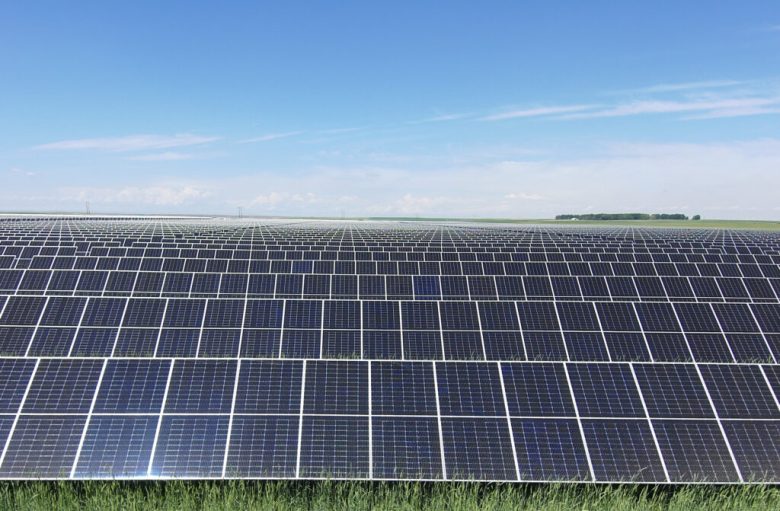
The Idaho Public Utilities Commission approved the application in August, which allowed the city to begin purchasing the solar energy Sept. 1.
The city’s contract is for 20 years. Hubble told the Sun he expects the city to pay slightly more for energy during the first 18 months of the project. Then, for the duration of the first 10 years, Hubble expects the city to either realize a savings or be paying no more than it would have regularly, without going renewable.
“We’re pretty excited about that savings opportunity, because basically this contract allows us to kind of lock in the rate for a portion of our power cost, and power costs do change, so that’s something we’re really excited about,” Hubble said. “It’s kind of cool, not only the renewable attribute of this, but that economic attribute of this is pretty exciting.”
Boise has a 25% share of the solar energy from the Black Mesa Energy project, while the remaining 75% is being used by Micron for renewable energy projects, Hubble said.
Idaho Power offers different types of Clean Energy Your Way programs for residential customers, businesses and large municipal customers like the city of Boise. The largest energy-using customers, like the city of Boise, are able to participate in the Clean Energy Your Way Construction agreement that powered the Boise Airport and Lander Street facility. Hubble thinks Boise’s project could set an example for other large Idaho Power municipal or industrial customers who want to go with renewable energy.
But there are other options for other types of Idaho Power customers too. Residential customers can cover all or part of their energy use with renewable wind and solar energy at a cost of 1 additional cent per kilowatt hour, with the ability to cancel any time. Business customers can purchase renewable energy certificates, with options to buy on a month-to-month basis or for a three-year commitment.
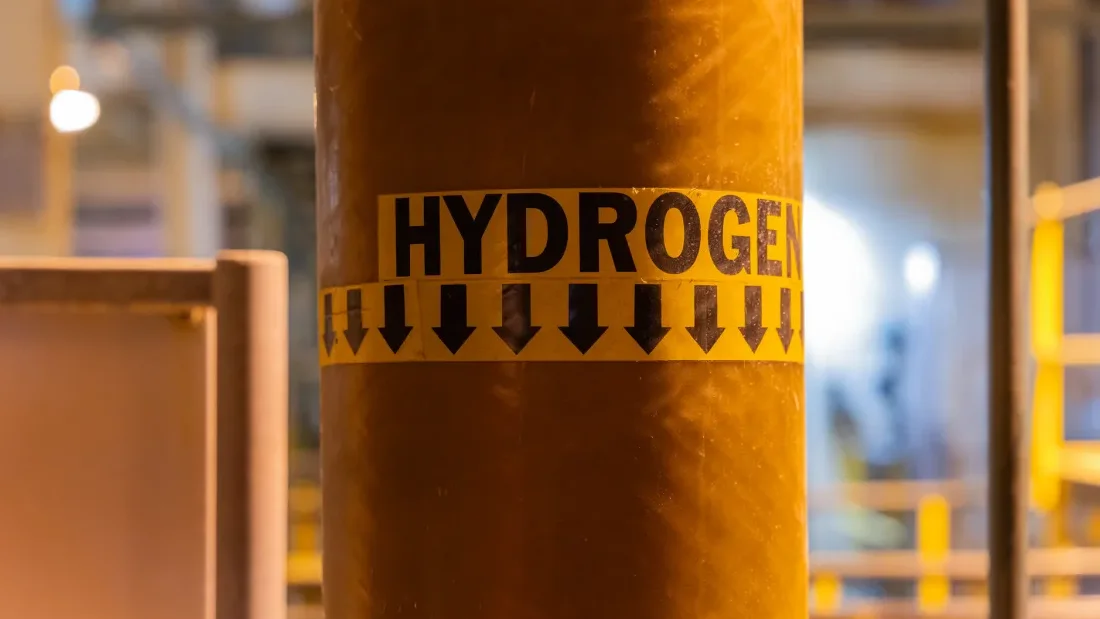
HYDROGEN: Advocates say developers are not listening to their environmental justice concerns as the process of building federally supported hydrogen hubs ramps up in Pennsylvania and other targeted areas. (The Daily Climate)
CLIMATE: As a second Trump term threatens climate action, Democrat-led state governments like Maryland’s are expected to be essential to progress on climate and energy issues. (Inside Climate News)
SOLAR:
RENEWABLES: As one of 67 federal sites receiving a total of $150 million in federal funding for clean energy and energy conservation projects, a U.S. Coast Guard yard in Baltimore will install a geothermal heat pump and a solar-powered microgrid. (Utility Dive)
STORAGE: The University of New Hampshire introduces a 1.4-million-gallon water tank “battery” that stores chilled liquid at off-peak hours for use in the campus cooling systems during periods of higher demand. (Concord Monitor)
UTILITIES: A Maine utility comes under scrutiny for the way it accounts for costs shared with affiliates as advocates suggest the practices might inflate costs for ratepayers. (Portland Press-Herald, subscription)
GRID: ISO New England uses a new tool to predict that, even in the case of extreme weather events, the grid would likely only experience limited, manageable shortfalls this winter. (RTO Insider, subscription)
EMISSIONS: New York Gov. Kathy Hochul considers reviving a plan for congestion pricing in New York City before a new Trump administration can block the program. (Associated Press)
OFFSHORE WIND: A coalition of East Coast states moves ahead with plans for a compensation fund to mitigate the financial impact offshore wind could have on commercial fishermen. (SeafoodSource)
TRANSIT: A New York ferry company announces plans to use renewable diesel in its fleet, complementing its ongoing plans to move to hybrid vessels. (Hudson County View)
COMMENTARY: Maryland conservatives should rise above politics and support adoption of electric school buses for environmental and fiscal reasons, former Republican National Committee chair Michael Steele says. (Maryland Matters)
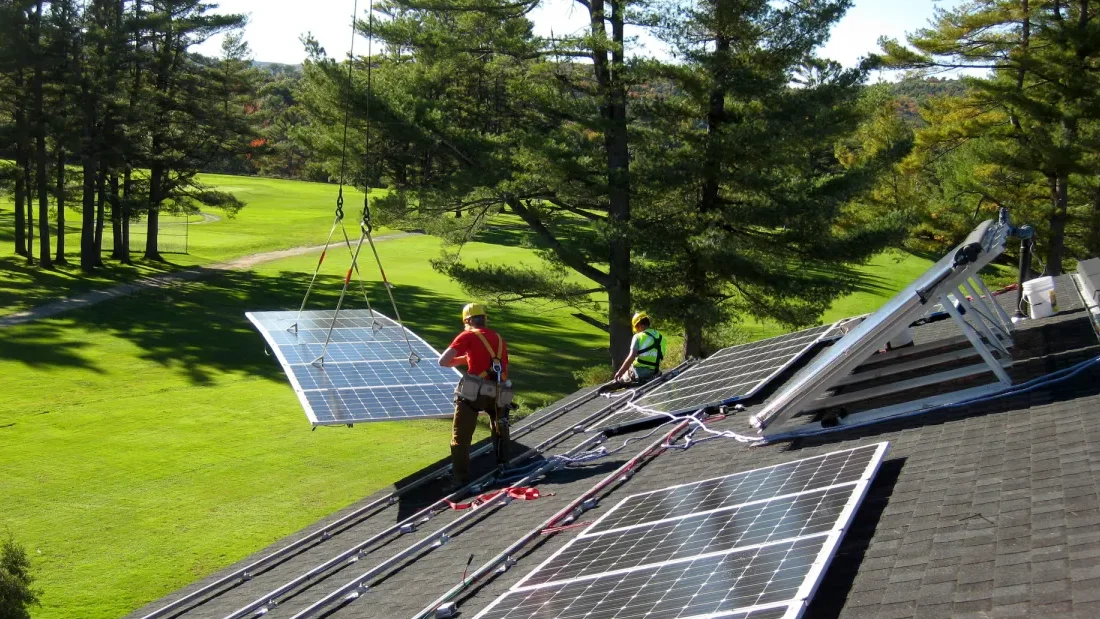
SOLAR: A new study finds local governments in southern Virginia have approved 13 GW of solar generation in the last decade, but roughly a quarter of those projects still need state permits and a growing number of localities are now blocking solar farms. (Cardinal News)
ALSO:
STORAGE:
WIND: A Texas anti-abortion group urges the state Supreme Court to give standing to residents who want to challenge a wind farm’s tax breaks, in hopes a ruling would also allow it to challenge public funding for abortion access. (Bloomberg, subscription)
CLEAN ENERGY: Researchers say $4.5 billion of planned clean energy investment in Texas and more than 22,000 jobs could be threatened if President-elect Trump rolls back Joe Biden’s landmark climate legislation. (Houston Chronicle)
OIL & GAS:
ELECTRIC VEHICLES: “We’re not there”: West Virginia’s transportation secretary tells state lawmakers the electric vehicle transition is moving slowly because of a lack of charging stations as well as lagging battery technology. (WV Metro News)
NUCLEAR: Texas A&M University invites developers to build nuclear power generators on one of its campuses, after previously offering up land for construction of gas-fired power plants. (Houston Chronicle)
GRID:
UTILITIES: San Antonio, Texas’ municipal utility far exceeds its projections to produce $200 million in wholesale revenue over the summer, even as crews move to repair power plants that broke down ahead of the winter. (Houston Chronicle)
COMMENTARY: Energy developers and farmers should work together to pair more solar farms with honeybees and other agricultural projects to benefit Virginia, writes an editorial board. (Virginian-Pilot)
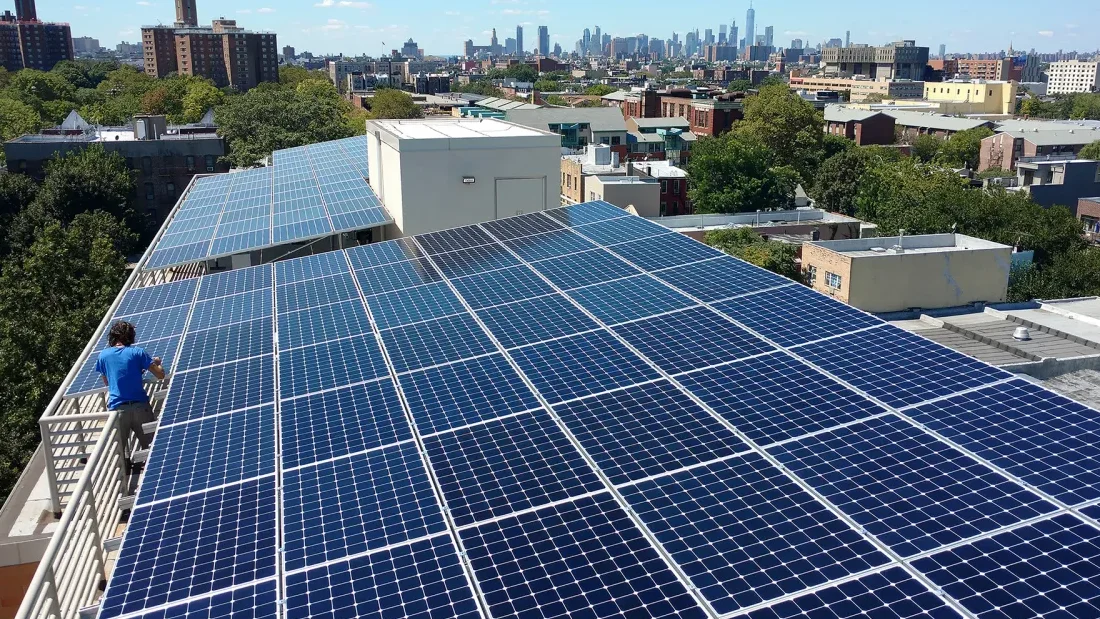
SOLAR: A study finds California’s 17,000 MW of rooftop solar capacity saved residents about $2.3 billion on their utility bills this year, casting doubt on “cost-shift” arguments used to support net-metering rate cuts. (Canary Media)
ALSO:
WIND:
STORAGE: Arizona Public Service agrees to purchase power from a proposed 250 MW battery energy storage system in central Arizona. (Solar Quarter)
TRANSITION: Arizona utilities award three communities a total of $125,000 to help them weather coal plant retirements. (Independent)
ELECTRIFICATION: Climate advocates say California and Washington state election losses for initiatives aimed at phasing out natural gas do not accurately reflect public sentiment on electrification. (Heatmap)
CLIMATE: New documents reveal California’s oil and gas lobby pioneered strategies in the 1950s aimed at obscuring fossil fuel-burning’s contributions to pollution and climate change and downplaying the risks. (DeSmog)
PUBLIC LANDS:
BIOFUELS: An Oregon city proposes a recycling facility that would produce pipeline-grade methane fuel from diverted organic waste. (OPB)
MINING: Arizona advocates challenge the state land board’s approval of a pipeline right-of-way for a proposed copper mine in the southern part of the state. (AZ Mirror)

A successful regional collaboration to secure federal Inflation Reduction Act money in northeast Ohio has inspired a new, ongoing effort to help cities, counties, utilities and community groups coordinate on clean energy.
Three Cleveland-area foundations last month announced the launch of Power Up Local, which aims to play both a matchmaker and wedding planner role on large-scale, regional clean energy developments. The initiative plans to help connect potential partners, maximize projects’ community benefits, and facilitate joint funding opportunities such as federal grants, tax incentives, or green bank loans.
“This is really looking for the larger, more ambitious stakeholder projects that have direct stakeholder benefits,” said Daniel Gray, Power Up Local’s executive director. A big emphasis will be on assembling groups who “might not have worked with each other originally or understood where there’s an overlap” between clean energy and other goals.
The initiative could offer a new path for local leaders to advance in a place where state government remains hostile to clean energy. The continued availability of federal funding is in question following former President Donald Trump’s reelection, but Gray and others said they are confident some form of federal support for clean energy will remain during his second term.
The idea for Power Up Local grew out of collaboration among Cuyahoga County, the cities of Cleveland and Painesville, and other organizations on a $129 million grant application under the federal Climate Pollution Reduction Grant program. The application was among those awarded funding in July. It includes money for closing a coal plant and building multiple solar arrays, including on four closed landfills.
Beyond reducing pollution, the project will help lower electricity costs and generate revenue. Some of that will in turn aid in conservation efforts for the West Creek Conservancy, including lakeside access for residents in Lake County. Gray did some work on the project as director of local strategies for the Citizens Utility Board of Ohio, and local philanthropic support also helped in assembling the grant application.
The Cleveland Foundation, George Gund Foundation and the Fund for Our Economic Future are providing initial funding for Power Up Local. Initially, the program’s three full-time employees are being housed under Fund for Our Economic Future, with a goal of spinning it out as an independent nonprofit by 2027.
The George Gund Foundation also provides funding to the Energy News Network. Like other donors, it has no oversight or input into the editorial process and may not influence stories.
Gray said Power Up Local will help stakeholders think bigger and more broadly about projects. For example, a project to redevelop a former industrial site may be able to help bring in other properties from a land bank or other group, potentially expanding into an economic redevelopment district that might support a microgrid, he suggested.
“We can add efficiency to projects, both financially and timewise,” Gray said.
Power Up Local will be a resource for organizations that want to add clean energy to a project but may not have the time or bandwidth to figure out how to do it. “They don’t necessarily know how to engage the marketplace,” Gray said.
And when it comes to funding, competitive grants will just be part of the story. A range of other credits or incentives can also help bring more clean energy. That raised a question, said Stephen Love, program director for environmental initiatives at the Cleveland Foundation: “What would it look like at scale beyond just the competitive grants to really unlock the whole scale of federal resources?”
While Power Up Local will work on clean energy projects, those projects must still be “net-neutral or revenue-positive” in order to promote economic development, Gray said. “We’re looking to develop as much community benefit as possible.”
Those benefits can come from lower electricity rates for people with high energy burdens, health benefits from lower pollution, job opportunities, conservation, access to parks, redevelopment of properties to attract businesses, and so on.
“This is about economic development. This is about creating economic opportunity in our communities,” said Love. As he sees it, clean energy can help drive that development.
No one knows what Trump’s presidential victory will mean for federal clean energy funding, but advocates are confident some funding will still be available.
“There are still grants to go after, and will likely still be grants to go after in the future,” Gray said. A repeal of the Inflation Reduction Act and Bipartisan Infrastructure Law would take time, and much of the grant funding has flowed to districts that supported Trump in 2020.
Even if agencies under Trump stopped carrying out the law, “I don’t think the bulk of the IRA direct credits are going to go away,” Gray said. He noted that Rep. Dave Joyce (R-Bainbridge Township) is among 18 members of Congress who wrote to House Speaker Mike Johnson this summer to support continuation of the energy tax credits.
Atlas Public Policy’s Climate Portal Program estimates those tax credits could exceed a quarter of a trillion dollars, with nearly another $250 billion of potential credits under the 2021 Bipartisan Infrastructure Law. Those credits can serve as refunds for nonprofits and local governments, which is how sewage treatment authorities in Columbus and Cincinnati plan to offset big chunks of the costs for biogas plants at two of their wastewater treatment facilities.
Financing opportunities will also be available from green banks, Gray said. Commercial banks also are looking to expand their portfolios for financing clean energy projects as part of corporate sustainability goals, he noted.
Power A Clean Future Ohio has already been working for several years to help its 50 local government members find ways to cut greenhouse gas emissions, based on their individual interests and priorities. Executive Director Joe Flarida said Power Up Local’s work will be a welcome complement to its ongoing work.
“It just underscores the huge needs we have in the state of Ohio to invest locally and ensure that our local leaders and local governments have all the resources they need to do this work efficiently,” he said.
In Flarida’s view, an anti-climate approach by the incoming Trump administration “is also an anti-jobs approach.” And even if the federal government no longer treats climate change as a key priority, “that doesn’t change the reality that this is an issue we have to address head on,” he said.
Gray encourages local governments and other organizations with ideas for projects to reach out in the coming weeks and months.
“Now is the time to start thinking about what might be possible,” he said.

NOTE TO READERS: This newsletter has been updated to correct the numbers for MidAmerican Energy’s resource plan.
BIOENERGY: As livestock producers tap federal climate funds to build biodigesters, advocates point to the threat that expanding feedlot operations pose to water quality, and call on the EPA to use its emergency authority to address nitrate pollution. (Cedar Rapids Gazette, Iowa Capital Dispatch)
UTILITIES:
NUCLEAR: The CEO of Wisconsin’s Dairyland Power Cooperative says the utility is “absolutely interested” in returning to nuclear power, suggesting smaller nuclear plants could be viable in the next 5-6 years. (Wisconsin State Journal)
GRID:
PIPELINES: A fossil-fuel backed organization has been mailing “weird” newspapers to North Dakota households criticizing years-old pipeline protests ahead of upcoming hearings for developer Energy Transfer’s lawsuit against Greenpeace. (Floodlight / North Dakota News Cooperative)
EQUITY:
NATURAL GAS: A Missouri utility says it is waiting for guidance from regulators on how to design its recently approved $900 million natural gas plant to operate in extreme cold. (KSDK)
WIND: An Iowa community college will decommission its 2.5 MW wind turbine due to age and maintenance needs, a year after the school closed its energy production program. (Cedar Rapids Gazette)
ELECTRIC VEHICLES:
MATERIALS: The U.S. EPA has increased air monitoring around a Missouri battery recycling facility that caught fire last week, and says pollution has not exceeded harmful levels since the initial blaze. (Missouri Independent)
FINANCE: Michigan launches a new business accelerator to help lenders access federal climate funds. (Crain’s Detroit Business, subscription)
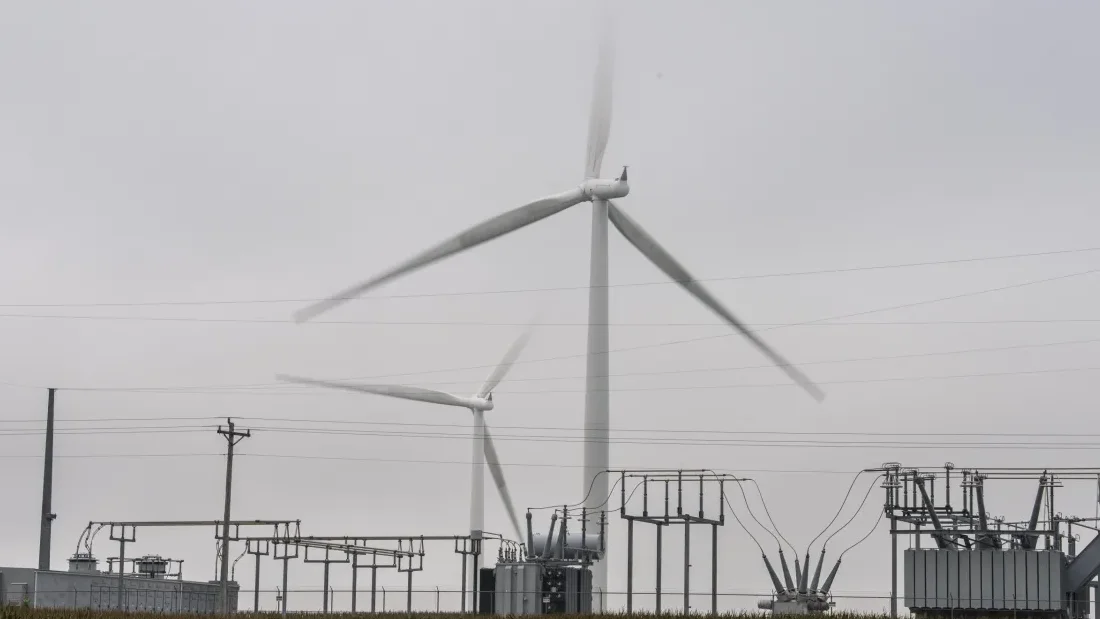
WIND: Washington Gov. Jay Inslee greenlights the proposed Horse Heaven Hills wind facility in the southern part of the state and urges regulators to streamline turbine permitting, saying it is essential to meeting “urgent clean energy needs.” (Seattle Times)
UTILITIES:
GRID:
CLEAN ENERGY:
CLIMATE:
OIL & GAS: A judge orders a New Mexico oil and gas operator to pay the Navajo Nation, Jicarilla Apache Tribe and federal government more than $3.55 million in lost royalties after she submitted fraudulent drilling production records. (news release)
ELECTRIC VEHICLES: The Denver Police Department adds 27 electric bicycles to its patrol fleet. (KDVR)
POLITICS: Colorado advocates say Chevron’s support for an election-reform ballot measure is aimed at increasing corporate influence in politics and electing candidates weak on environmental policy. (CPR)
COMMENTARY:
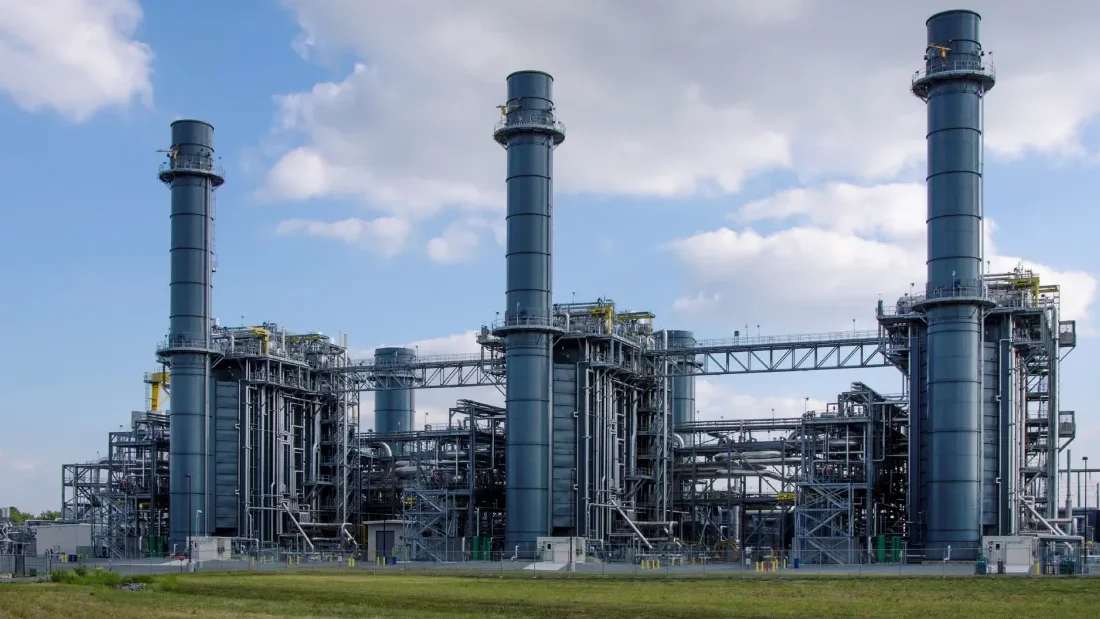
UTILITIES: North Carolina regulators approve Duke Energy’s long-term resource plan, which ramps up renewable energy and retires the utility’s final coal plants, but also includes 9 GW of new natural gas-fired power and gives up on the state-mandated goal of cutting emissions 70% by 2030. (Energy News Network)
ALSO:
SOLAR: New solar installations in North Carolina fell 40% from last year after Duke Energy lowered the rate it pays for rooftop solar, but longtime installers remain optimistic because of new home battery incentives. (Energy News Network)
ELECTRIC VEHICLES: Electric vehicle startup Canoo furloughs 30 workers in Oklahoma as it struggles to raise capital, and company officials report it might have to “terminate or significantly curtail” its operations there. (Tulsa World)
WIND: Members of the Muscogee Nation in Oklahoma say they’re worried about potential environmental and property value impacts from a proposed 100-turbine wind farm. (KOKI)
PIPELINES: Anti-pipeline activists who spent the last decade fighting the Mountain Valley Pipeline turn their efforts to blocking a 26-mile project in Virginia that’s part of a broader Southeast expansion. (WVTF)
STORAGE: A startup receives $20 million in federal funding to build a Texas factory for containers that hold used electric vehicle batteries that can be assembled for stationary energy storage. (Canary Media)
OIL & GAS:
GRID: A Tennessee man faces federal charges for allegedly planning to damage an electrical substation in Nashville with a drone armed with explosives. (CNN)
CLIMATE:
POLITICS: Virginia Congress members call for reauthorization of the landmark 2021 bipartisan infrastructure law, which funded abandoned mine land restoration, accelerated the energy transition and paid for transportation projects. (Virginia Mercury)
COMMENTARY: The Tennessee Valley Authority owes an apology to the families of more than 50 workers who helped clean up the utility’s 2008 coal-ash spill in Tennessee and have since died from illnesses related to their exposure, writes a columnist. (Knoxville News Sentinel)

ELECTIONS: Rhode Island voters approve a $53 million green economy bond bill, which includes $15 million to help develop the Port of Davisville into an offshore wind hub. (Rhode Island Current)
ALSO: Control of the Pennsylvania state House and Senate is still up in the air as of this morning; if Democrats hold on to the House majority and flip the Senate, which is unlikely, it could be good news for Gov. Josh Shapiro’s plans for a carbon cap-and-trade system. (Philadelphia Inquirer)
ELECTRIC VEHICLES: An unexpected surge in electric vehicle sales in Maine has drained the state’s $3.5 million incentive fund, though low-income buyers are still eligible for rebates. (Maine Public)
OFFSHORE WIND: Turbine blades spotted in transit off the Massachusetts coast are part of a plan to strengthen some of Vineyard Wind’s turbines, after a blade broke and fell into the water in July. (New Bedford Standard-Times)
TRANSMISSION: Preliminary work has begun along the path of a 70-mile transmission line in Maryland, even as opposition remains high and opponents say they will continue to fight the project. (Baltimore Sun, subscription)
NUCLEAR: The owner of Three Mile Island forges ahead with plans to reopen the plant and sell power to Microsoft, following federal regulators’ rejection last week of another plan to colocate a data center at a nuclear plant. (Utility Dive)
GRID: In central Massachusetts, National Grid gets approval for new and upgraded substations and power lines intended to accommodate greater use of solar and energy storage. (Worcester Telegram and Gazette)
SOLAR: In western Massachusetts, a growing number of agrivoltaic projects showcase the commercial potential of installing solar panels on active farmland. (Christian Science Monitor)
COMMENTARY: New York’s plan to require increasing electric truck sales promises significant health benefits, particularly in low-income communities of color, and should not be delayed despite vocal opposition, says an environmental justice advocate. (Streetsblog NYC)